You’ll find extensive 3D printing classes for jewelry makers through specialized institutions like 3D-Akademie, which trains approximately 80 students annually in digital jewelry manufacturing. These courses cover essential CAD software like Rhino, stereolithography (SLA) techniques, and castable resin applications that reduce production time from weeks to hours. You’ll master precision stone setting, complex geometric modeling, and sustainable production methods while learning to create intricate designs impossible with traditional techniques. Continue exploring to access advanced prototyping secrets.
Digital Jewelry Design Fundamentals With CAD Software
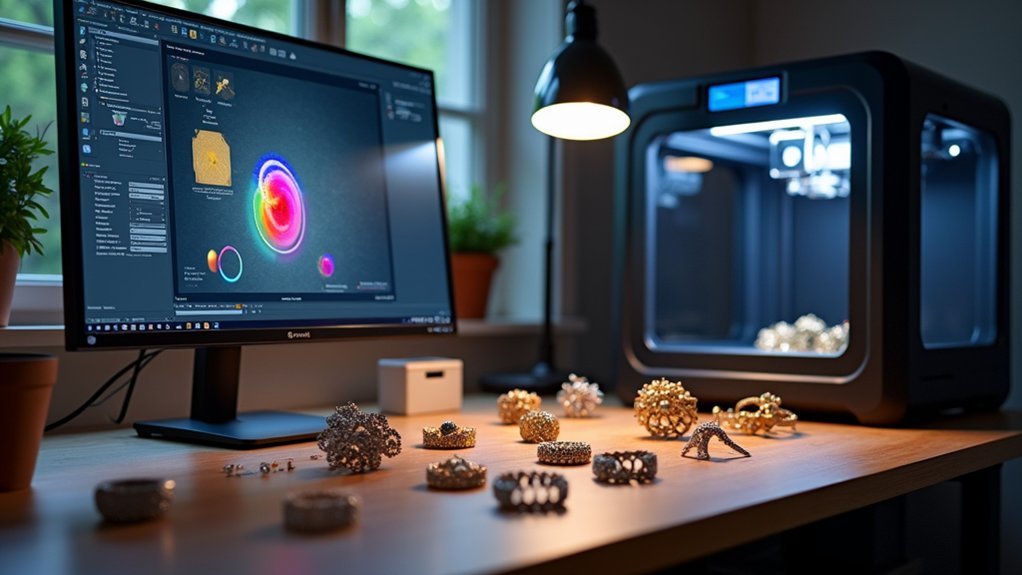
When you’re stepping into the world of digital jewelry design, mastering CAD software like Rhino becomes your foundation for transforming creative concepts into tangible pieces.
You’ll learn essential modeling components, including geometric manipulation and creating solid printable forms from points, lines, curves, and surfaces. Computer Aided design courses provide hands-on experience traversing the CAD environment while utilizing both basic and advanced commands to build intricate jewelry pieces.
You’ll practice precision design tools through targeted exercises, ensuring proper stone setting with various sizes and shapes.
The curriculum challenges you to create complex custom designs from provided instructions and images, developing your unique style.
3D Printing Technology for Custom Jewelry Production
Once you’ve mastered digital design fundamentals, 3D printing technology transforms your creative visions into physical jewelry pieces with unprecedented precision and speed. You’ll discover that complex geometries impossible with traditional methods become achievable through stereolithography (SLA) techniques. Your production timeline shrinks from weeks to hours, while maintaining exceptional quality standards that the jewelry industry demands.
| Traditional Methods | 3D Printing Technology |
|---|---|
| Days/weeks production time | Hours to prototype |
| Limited design complexity | Unlimited geometric freedom |
| High assembly requirements | Single-print completion |
| Expensive tooling costs | €2.50 per wax model |
| Manual precision limitations | CAD-driven accuracy |
You’ll integrate seamlessly with casting facilities by sending digital files directly from Rhino software. This streamlined workflow eliminates multiple production steps while reducing errors, making custom pieces of jewelry more accessible and profitable for your business.
Rhino CAD Modeling for Professional Jewelers
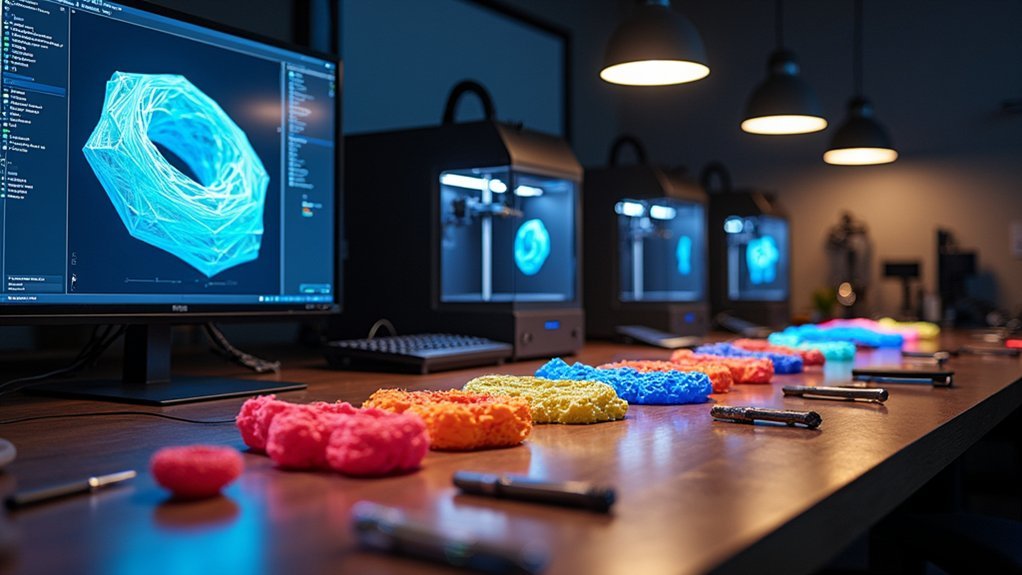
You’ll master Rhino’s interface and basic geometric tools to create precise digital jewelry models from scratch.
The course progresses to advanced CAD techniques that let you build complex custom designs with intricate details impossible to achieve through traditional methods.
You’ll also learn the complete 3D printing workflow, from finalizing your virtual designs to sending files directly to casting facilities for rapid prototyping.
Rhino Software Fundamentals
Mastery of Rhino CAD software forms the foundation for creating professional jewelry designs that translate seamlessly from digital concept to physical reality.
You’ll navigate the 3D workspace and manipulate geometric objects with precision, transforming basic elements into sophisticated jewelry pieces ready for production.
The fundamental skills you’ll develop include:
- Navigation and viewport control – Moving efficiently through 3D space to examine your designs from every angle
- Geometric manipulation – Working with points, lines, and surfaces to build complex forms
- Solid modeling techniques – Creating watertight models suitable for 3D printing and metal casting
- Command proficiency – Mastering essential tools that streamline your jewelry design workflow
These core competencies guarantee every model you create will print successfully and meet professional manufacturing standards.
Advanced CAD Techniques
After establishing your foundational Rhino skills, you’ll advance to sophisticated techniques that separate amateur designs from professional-grade jewelry models.
You’ll master complex geometric manipulations through thorough command sets, enabling you to tackle intricate custom designs from client specifications and reference images.
The course emphasizes proper stone setting techniques used in the jewelry industry, covering various sizes and shapes with appropriate seating.
You’ll learn to create structurally sound designs that balance aesthetics with functionality across a wide range of jewelry styles.
Advanced exercises focus on multi-stone settings and high-difficulty custom pieces.
You’ll develop precision skills essential for professional work, including model preparation best practices that guarantee your designs model and print successfully without requiring costly remakes or compromising finish quality.
3D Printing Workflow
Once you’ve mastered advanced CAD techniques, transforming your Rhino models into physical jewelry requires understanding the complete 3D printing workflow. This thorough process bridges the gap between your digital designs and tangible pieces.
The workflow encompasses four critical stages:
- Model preparation – You’ll optimize your Rhino designs for printing, ensuring proper wall thickness and structural integrity.
- File export – Converting your models to STL format while maintaining geometric accuracy.
- Print execution – Operating 3D printers with appropriate settings for jewelry-grade materials.
- Post-processing – Cleaning, curing, and finishing printed pieces before casting.
You’ll gain hands-on experience with each stage, learning how design parameters directly impact final product quality.
This knowledge enables you to send models confidently to casting facilities, streamlining your production pipeline.
Stereolithography Techniques for Intricate Jewelry Pieces
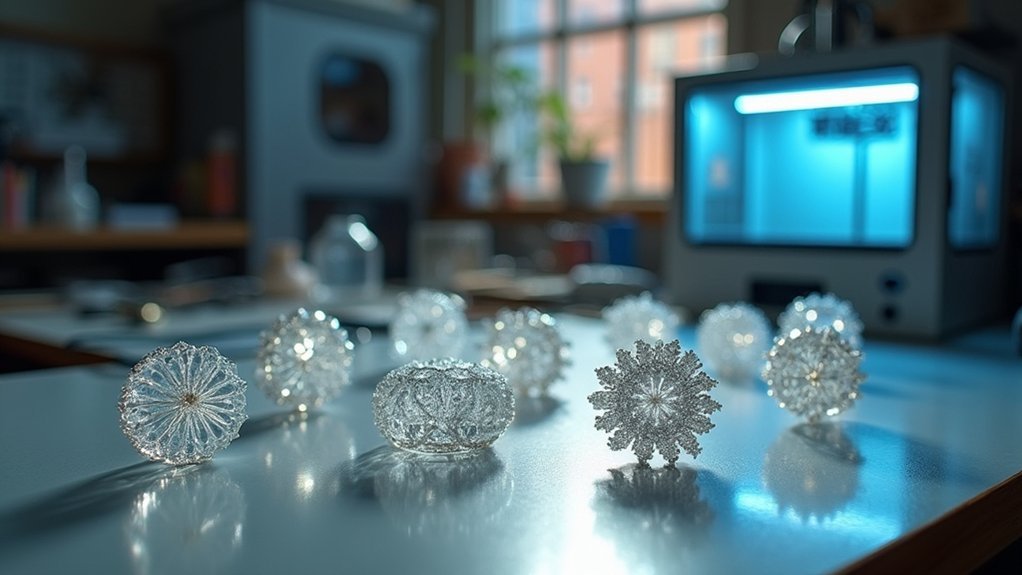
Stereolithography revolutionizes jewelry making by using laser-cured liquid resin to create intricate designs that traditional methods can’t achieve.
You’ll find SLA enables complex net-like shapes and hollow pieces in single prints, eliminating assembly and soldering steps that traditional jewelry making requires.
With high precision and minimal post-processing, you’ll experience remarkably lower miscast rates using Formlabs Castable Wax 40 Resin designed specifically for jewelry applications.
Formlabs Castable Wax 40 Resin delivers exceptional precision and dramatically reduces miscast rates in jewelry applications.
At approximately €2.50 per model, you’ll save considerable costs compared to traditional methods with higher material and labor expenses.
SLA accelerates your production times while enhancing creativity through rapid prototyping.
You’ll make immediate design adjustments based on client feedback, streamlining your entire workflow and expanding possibilities for intricate jewelry pieces previously considered unfeasible.
Castable Resin Applications in Traditional Jewelry Making
While traditional jewelry making has relied on hand-carved wax models for centuries, castable resin transforms this fundamental process by replacing wax with digitally precise 3D printed models.
You’ll discover how this material streamlines your entire production workflow while maintaining the craftsmanship you value.
Castable resin offers several key advantages for your jewelry practice:
- Eliminates traditional wax modeling – reducing production time and mold-making costs considerably
- Enables complex geometric designs – creating intricate structures impossible with hand-carving techniques
- Provides superior surface quality – Formlabs Castable Wax 40 Resin minimizes miscasts and improves finishes
- Supports rapid prototyping – allowing quick design iterations before final casting
You’ll find that incorporating castable resin doesn’t replace your traditional skills but enhances them with digital precision and expanded creative possibilities.
Advanced 3D Printing Workshop for Precious Metal Casting
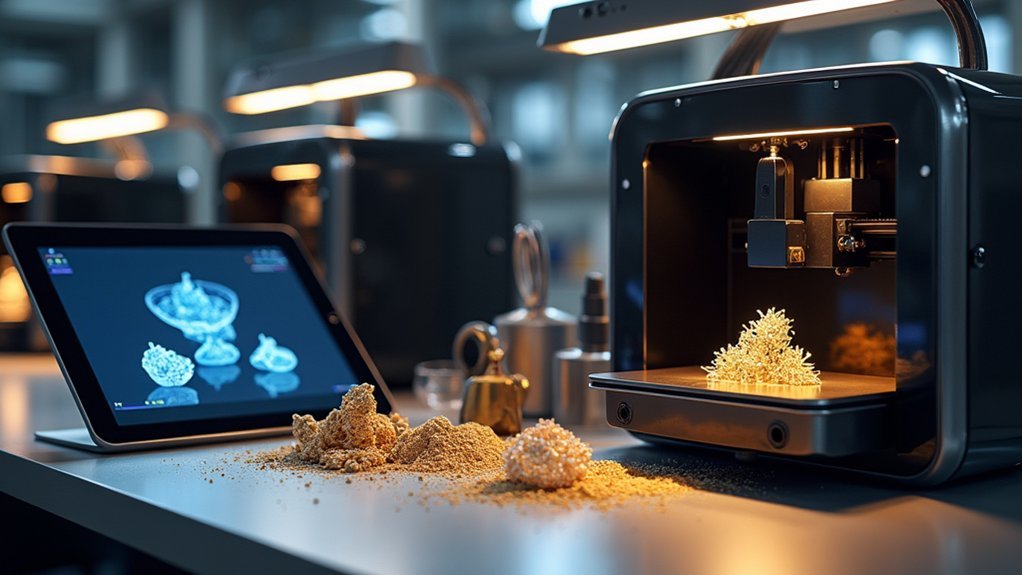
When you’re ready to master the complete workflow from digital design to precious metal casting, the Advanced 3D Printing Workshop for Precious Metal Casting provides thorough training in Rhino CAD software and castable resin printing techniques.
You’ll learn to create intricate designs that can be directly sent to casting facilities for production in precious metals.
The workshop emphasizes precision and repeatability, dramatically improving your production efficiency compared to traditional methods.
You’ll print your custom designs during the course, receiving immediate feedback and making adjustments before final casting. This hands-on approach lets you master complex structures previously impossible with conventional techniques.
The integration of advanced 3D printing not only enhances your creativity but also opens new possibilities for sophisticated jewelry production.
Rapid Prototyping Methods for Jewelry Design Validation
After mastering advanced casting techniques, you’ll want to validate your designs quickly before committing to expensive metal production.
Rapid prototyping transforms your jewelry design process by leveraging CAD software like Rhino and stereolithography (SLA) 3D printing technology.
Here’s how rapid prototyping revolutionizes your workflow:
- Speed Enhancement – Reduce production times from 80+ hours to just a few hours
- Cost Efficiency – Print wax models for approximately €2.50 each versus expensive traditional methods
- Design Validation – Identify flaws immediately and make real-time adjustments before final production
- Complex Geometry – Create intricate designs that would be challenging with conventional techniques
You’ll streamline your entire design validation process, enabling faster market turnaround while maintaining precision and reducing material waste through efficient digital modeling and testing.
Digital Stone Setting and Precision Modeling Techniques
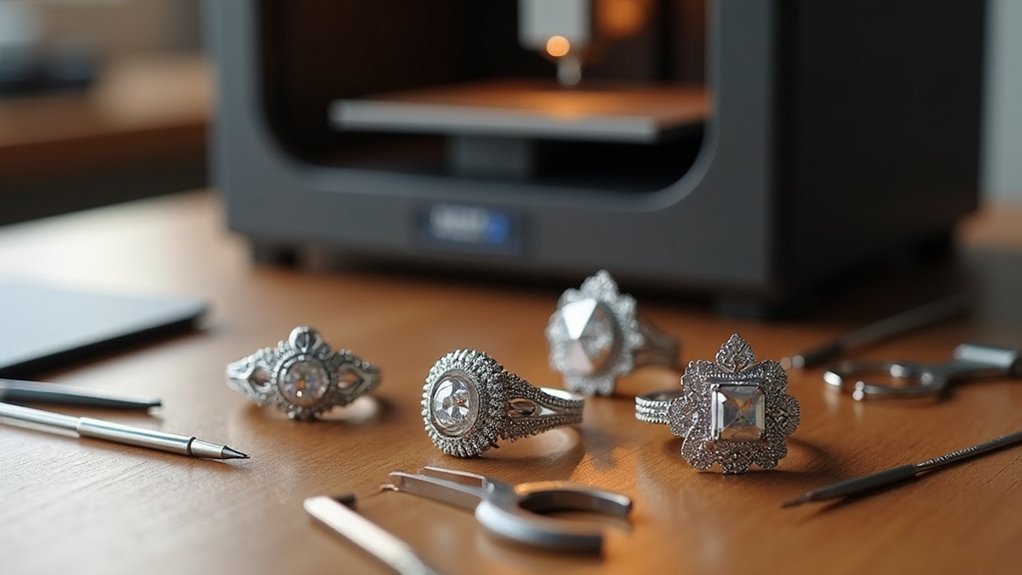
Once you’ve established efficient prototyping workflows, digital stone setting becomes your gateway to creating professionally finished jewelry with mathematical precision.
You’ll master CAD software commands that create exact seating dimensions for gemstones of any shape or size, ensuring secure fits within your jewelry models. These precision modeling techniques let you utilize advanced tools that achieve intricate designs while minimizing costly remakes and improving overall quality.
Precision CAD modeling creates exact gemstone seating dimensions, ensuring secure fits while minimizing costly remakes and maximizing design quality.
You’ll learn to prepare models for 3D printing by focusing on design and structural integrity, which is essential for successful casting and finishing.
This digital integration enhances traditional goldsmith training through rapid prototyping capabilities, allowing you to quickly identify and implement design improvements.
High difficulty exercises challenge experienced students to create complex custom designs incorporating multiple stones and intricate settings.
Sustainable Jewelry Production Through 3D Printing
As the jewelry industry increasingly prioritizes environmental responsibility, 3D printing transforms how you approach sustainable production by drastically reducing material waste compared to traditional subtractive manufacturing methods.
You’ll discover four key sustainability advantages when adopting 3D printing techniques:
- Minimal waste generation – You only use the exact amount of material needed for each piece.
- Eco-friendly castable resins – These reduce energy consumption and resource requirements in metal casting.
- Rapid prototyping efficiency – You’ll create fewer physical prototypes, lowering your design process’s carbon footprint.
- On-demand production – You can eliminate overproduction and excess inventory through customized manufacturing.
Professional Development in Digital Jewelry Manufacturing
Beyond implementing sustainable practices in your jewelry business, you’ll need to continuously develop your technical skills to maximize 3D printing’s potential in digital manufacturing.
Professional development courses teach CAD modeling using tools like Rhino, enabling you to create intricate designs for jewelry production. Workshops provide hands-on experience where you’ll print your designs during classes, reinforcing understanding of design parameters and production techniques.
| Training Component | Duration | Benefits |
|---|---|---|
| CAD Modeling Basics | 2-3 weeks | Design foundation skills |
| Advanced 3D Design | 4-6 weeks | Complex geometry creation |
| Print Parameter Control | 1-2 weeks | Quality optimization |
| Rapid Prototyping | 2-3 weeks | Faster iteration cycles |
| Technology Updates | Ongoing | Industry competitiveness |
Institutions like 3D-Akademie train approximately 80 students annually, adapting curricula to technological advancements. This continuous education combines traditional craftsmanship with modern technology, helping you stay competitive.
Frequently Asked Questions
What Is the Cost of 3D Printing Training?
You’ll find 3D printing training costs vary widely, from $30 single workshops to $2,950 extensive two-week courses. Most programs range between $530-$2,950 depending on duration, depth, and specialized focus areas.
How to Turn 3D Print Into Jewelry?
You’ll create a digital model using CAD software, then 3D print it in castable resin or wax. Next, you’ll send the printed model to a casting facility for metal transformation into finished jewelry.
What Metals Cannot Be 3D Printed?
You can’t directly 3D print precious metals like gold, silver, platinum, or palladium using standard techniques. These require casting processes, while FDM printers won’t handle pure metals at all.
What Is 3D Printing in Jewellery?
You’ll use 3D printing to create intricate jewelry designs through CAD software, enabling rapid prototyping with castable resins. You can produce complex pieces in minutes rather than hours, exploring creative possibilities that traditional techniques can’t achieve.
In Summary
You’ll transform your jewelry-making craft by mastering these digital manufacturing techniques. Whether you’re starting with CAD fundamentals or advancing to stereolithography, each class builds essential skills for modern jewelry production. You’ll discover how 3D printing revolutionizes prototyping, reduces waste, and opens new creative possibilities. Don’t let traditional methods limit your potential—embrace these technologies to stay competitive and expand your design capabilities in today’s evolving jewelry industry.

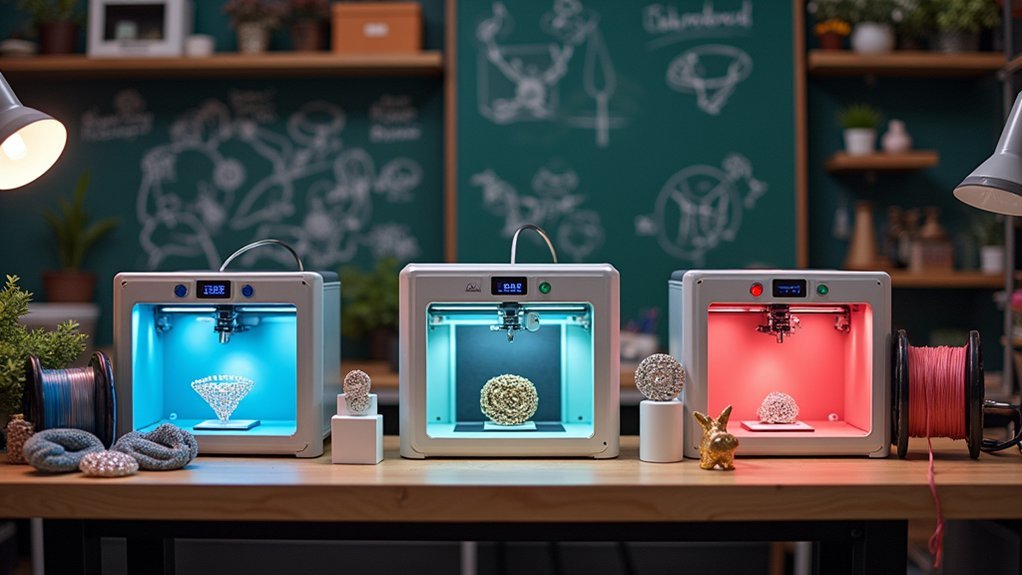
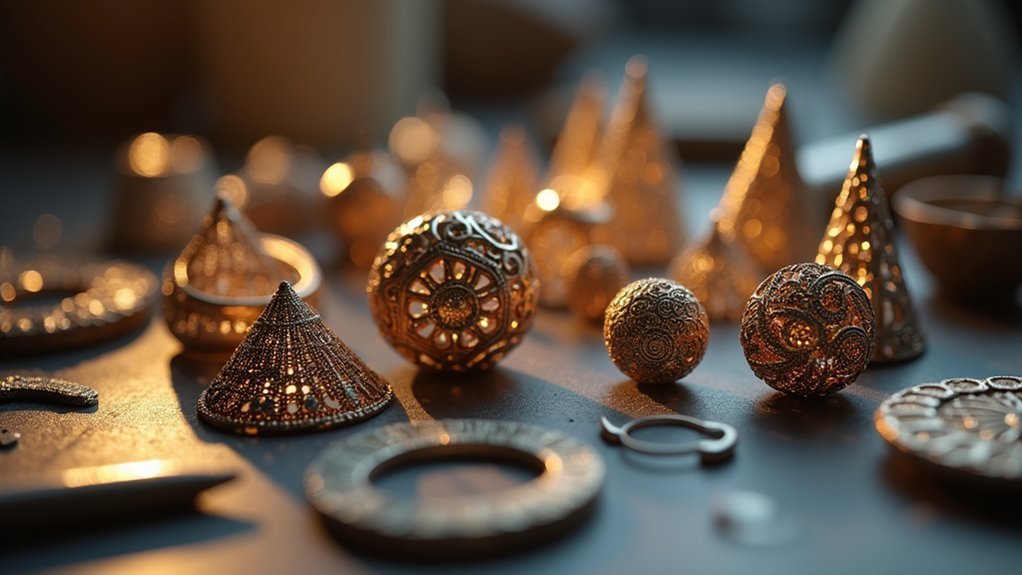
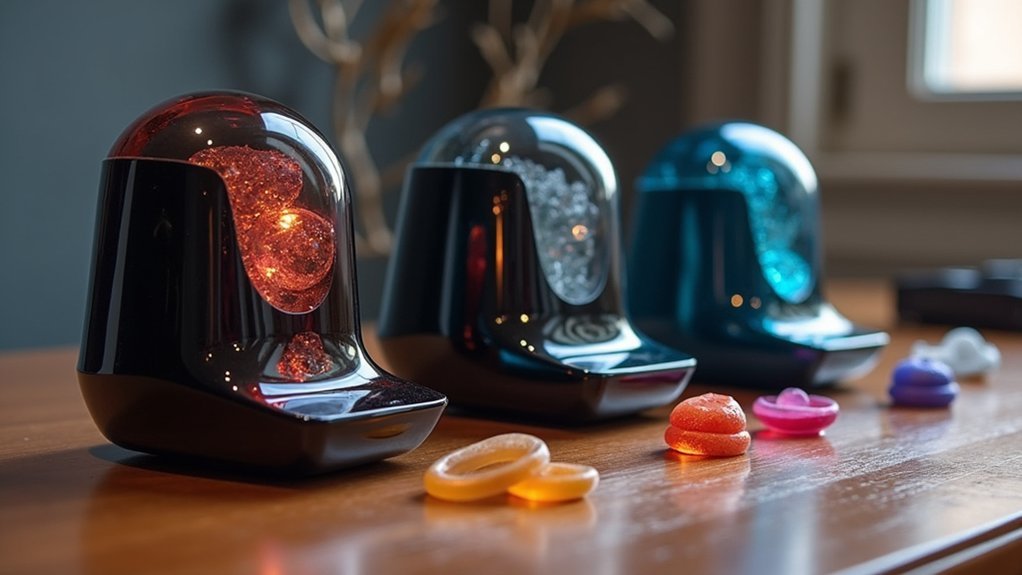
Leave a Reply